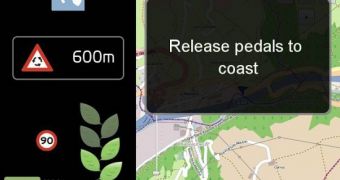It turns out that reducing fuel consumption really does have at least as much to do with a car’s makeup as it does with the behavior of the person behind the wheel.
Thus, the Volvo Group has recently announced that, according to the findings of a UN research project that it took part in over the past three years, eco-driving technologies can cut fuel consumption by as much as 10-15% in the case of trucks.
In a press release on the matter at hand, the company details that, as part of the eCoMove project, it looked at the advantages posed by various technologies intended to help folks drive more efficiently.
“For the past three years, the Volvo Group has participated in eCoMove, a European Union research project, in collaboration with a long list of different companies.”
“One of the areas under eCoMove that the Volvo Group has conducted research into was methods of consistently aiding drivers to drive as fuel efficiently as possible,” the company writes.
According to AutoBlog Green, the drivers who took part in this research project were first introduced to a dashboard screen, pictured next to this article.
The screen was intended to tell them if they were pushing the acceleration pedal a tad too hard or if the car was driven in the wrong gear.
“The control system in the truck or coach senses if the driver is accelerating too hard, if the driver's foot moves too quickly from the accelerator to the brake or if the vehicle is in too low a gear.”
“This information is displayed on the screen for the driver as a reminder of what eco-driving is all about,” explains Guillaume Vernet, project manager at intelligent transport systems at the Volvo Group in Lyon, France.
Next, the drivers were given access to a map and GPS data. This gave them an insight into what was ahead of them, and made it possible for them to use the acceleration and the brakes more effectively.
More precisely, the driver has an easier time figuring out when to ease off the accelerator and engage the brakes.
Lastly, wireless communication was established between the dashboard screen and traffic lights along a given route. This allowed drivers to determine the speed at which they had to move in order to avoid stopping at traffic lights.
“The highest consumption of fuel is through acceleration from stationary,” Guillaume Vernet says. Hence, trucks that do not stop at traffic lights burn less fuel.
Guillaume Vernet argues that, all things considered, this eco-driving technology can lead to noteworthy fuel savings, especially in areas with frequent changes in speed.
Needless to say, this fuel economy yields significant benefits both financially- and environmentally-wise.

 14 DAY TRIAL //
14 DAY TRIAL //